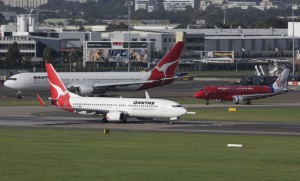
Load factors across domestic services decreased during May as capacity growth outstripped demand growth, according to a statistical report by the Bureau of Infrastructure, Transport and Regional Economics (BITRE).
Over the month there were 4.23 million domestic passengers, representing a 5.3 per cent increase over May 2009, while revenue passenger kilometres (RPKs) increased by 4.1 per cent. Capacity increased by 8.2 per cent as the number of aircraft trips increased by 7.1 per cent. As a result, seat utilisation fell from 76.9 per cent to 73.9 per cent. The report noted that seat utilisation decreased on 35 of the 51 routes for which it has comparative data.
Possibly in a sign that business traffic has rebounded, traffic on the Melbourne-Sydney route showed the biggest increase, up by 18.5 per cent. Large increases were also felt on Adelaide-Brisbane (17 per cent), Gold Coast-Sydney (16.2 per cent), Port Macquarie-Sydney (16.1 per cent) and Adelaide-Sydney (13.5 per cent).
The biggest decrease in passenger traffic was on the Brisbane-Hamilton Island route, which was down 19.4 per cent, followed by Adelaide-Canberra (-17.7 per cent), Maroochydore-Melbourne (- 14.9 per cent) and Ballina-Sydney (- 12.8 per cent).














